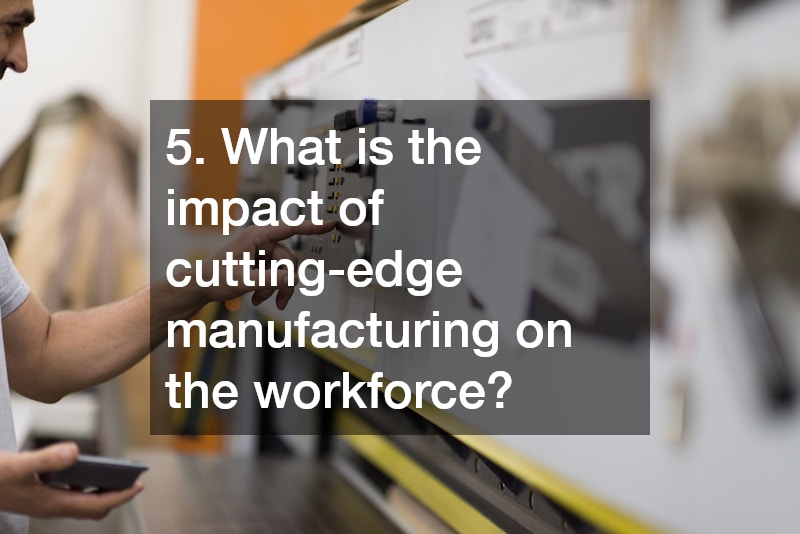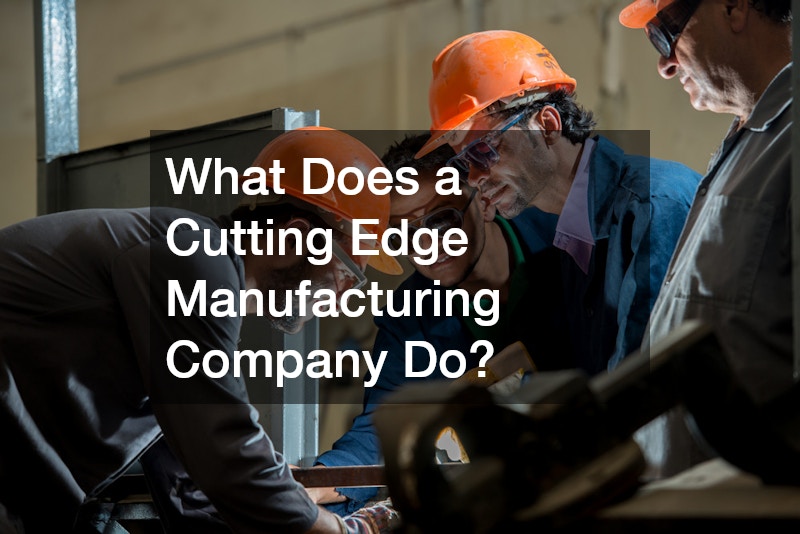In today’s rapidly evolving industrial landscape, manufacturing companies have to stay ahead of the curve to remain competitive. A cutting edge manufacturing company leverages state-of-the-art technology and innovative practices to deliver superior products and services. This article explores what sets these companies apart and how they operate at the forefront of the manufacturing sector.
1. How does a cutting edge manufacturing company utilize advanced technology?
a. Implementation of Automation
Automation is revolutionizing manufacturing by streamlining operations and reducing reliance on manual labor. By integrating automated systems, companies enhance efficiency and minimize human error, leading to increased productivity and lower operational costs.
Advanced robotics and equipment are deployed on the assembly lines to perform repetitive tasks without fatigue. This not only accelerates the production process but also ensures consistency in quality and output.
Automation also plays a critical role in predictive maintenance, where sensors track equipment health and prevent unexpected downtimes. This proactive approach optimizes the manufacturing schedule and extends the lifespan of machinery.
b. Adoption of AI and Machine Learning
Artificial intelligence and machine learning are pivotal in enhancing production capabilities through data-driven insights. These technologies enable companies to predict demand, customize products, and optimize resource allocation efficiently.
AI algorithms analyze large datasets to forecast potential production challenges and recommend solutions before issues arise. This predictive capability reduces waste and enhances decision-making processes.
Furthermore, AI-driven quality control systems inspect products with precision, ensuring that each item meets stringent standards. The implementation of AI minimizes defects and reinforces manufacturers’ commitment to quality.
2. What role does a smart factory play in modern manufacturing?
a. Characteristics of a Smart Factory
A smart factory is characterized by its interconnected systems that communicate seamlessly through the Internet of Things (IoT). These systems exchange data to coordinate operations in real-time, creating a dynamic production environment.
Embedded sensors monitor environmental conditions and machinery performance, automatically adjusting operations for maximum efficiency. This self-regulating feature enhances production control and conserves resources.
By using digital twins, manufacturers replicate physical assets in a virtual space to simulate processes and predict outcomes. This foresight allows companies to refine processes and mitigate risks before implementing changes in the real world.
b. Benefits of Smart Manufacturing
Smart manufacturing practices optimize operational efficiency by reducing waste, energy consumption, and production time. These improvements lead to significant cost savings and contribute to sustainable business models.
The automation and real-time data analysis inherent in smart manufacturing enhance forecasting accuracy and inventory management. As a result, companies can respond swiftly to market demands and minimize overproduction.
Customers benefit from higher-quality products at competitive prices, attributed to the precise and agile production methods. This strategic advantage strengthens manufacturers’ positions in a global market characterized by fierce competition.
3. How important is sustainability in cutting edge manufacturing?
a. Implementing Sustainable Practices
Sustainable manufacturing reduces environmental impact by prioritizing energy efficiency and resource conservation. By integrating renewable energy sources and recycling initiatives, companies can significantly lower their carbon footprint.
Innovative waste management strategies convert by-products into valuable resources, aligning with circular economy principles. This approach not only promotes sustainability but also encourages innovative thinking within the organization.
Companies also invest in eco-friendly technologies to mitigate pollution and comply with global environmental standards. Sustainability is a key aspect of corporate responsibility, reflecting a commitment to preserving the planet for future generations.
b. The Economic Impact of Sustainability
Sustainability initiatives can lead to considerable cost savings through efficient resource use and waste reduction. By decreasing dependence on nonrenewable resources, companies protect themselves from fluctuating market prices and shortages.
Brand enhancement is another significant outcome of sustainable practices, as consumers increasingly prefer environmentally responsible companies. This preference drives sales and builds long-term customer loyalty.
The emphasis on sustainability also attracts investors seeking ethical investment opportunities, ensuring continuous capital flow for future innovations. As a result, cutting edge manufacturers gain financial stability and a competitive advantage.
4. How do cutting edge manufacturers ensure quality and precision in their products?
a. Quality Control Technologies
State-of-the-art quality control technologies are critical to maintaining high standards in manufacturing. Advanced inspection systems employing AI ensure each product meets rigorous specifications and industry requirements.
Non-destructive testing methods allow for meticulous examination of materials and components without damaging them. This ensures only defect-free items reach the customer, reinforcing trust in the brand’s commitment to excellence.
Integrated quality management systems provide comprehensive oversight over the entire manufacturing process. Continuous monitoring and improvement strategies maintain consistent quality in rapidly changing production environments.
b. Precision Engineering and Its Importance
Precision engineering is fundamental to manufacturing high-standard products, as it minimizes variations and maintains consistency. This discipline focuses on producing finely-detailed components that fit and function flawlessly.
Advanced CNC machinery and laser technologies enable the creation of intricate designs with exacting tolerances. These innovations enhance product functionality and extend the lifespan of manufactured items.
Precision is crucial in sectors requiring stringent compliance, such as aerospace and healthcare, where even minor deviations can have significant consequences. cutting edge manufacturers that excel in precision engineering are at the forefront of these industries.
5. What is the impact of cutting edge manufacturing on the workforce?
a. Upskilling and Training
The adoption of advanced technologies necessitates ongoing upskilling and training programs for the workforce. Employees must acquire new competencies to handle innovative machinery and complex software systems effectively.
Continuous learning opportunities foster a culture of adaptability and resilience, enabling workers to thrive in a technology-driven environment. Companies that invest in employee development experience higher productivity and job satisfaction.
b. Changing Job Roles
Technology is transforming traditional job roles, requiring workers to adapt to new responsibilities and embrace digital tools. Many manual tasks are automated, leading to a shift toward roles focused on oversight and optimization.
Employers are adjusting workforce strategies to accommodate new job functions created by technological advancements. This shift opens diverse career opportunities and encourages innovative problem-solving approaches.




